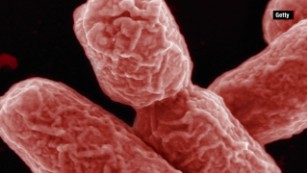Don't eat romaine lettuce, CDC urges amid E. coli concerns
The US Centers for Disease Control and Prevention warned US consumers on Tuesday to not eat romaine lettuce, as it may be contaminated with E. coli.
Thirty-two people, including 13 who have been hospitalized, have been infected with the outbreak strain in 11 states, according to the CDC. One of the hospitalized people developed hemolytic uremic syndrome, a potentially life-threatening form of kidney failure. No deaths have been reported.
People have become sick in California, Connecticut, Illinois, Massachusetts, Maryland, Michigan, New Hampshire, New Jersey, New York, Ohio and Wisconsin.
The Public Health Agency of Canada has identified an additional 18 people who have become sick with the same strain of E. coli in Ontario and Quebec.
The US Food and Drug Administration, which is also investigating the outbreak, cautions that if you have any romaine lettuce at home, you should throw it away, even if you have eaten some and did not get sick.

FDA Commissioner Dr. Scott Gottlieb said Tuesday that it is "frustrating" that the FDA cannot tie the outbreak to a specific grower, but "we have confidence that it's tied to romaine lettuce."
"Most of the romaine lettuce being harvested right now is coming from the California region, although there's some lettuce coming in from Mexico," he said.

Illnesses in the current outbreak started in October, and it is not related to another multistate outbreak linked to romaine lettuce this summer.
A similar outbreak caused by contaminated romaine lettuce occurred in December, Gottlieb said, and affected the United States and Canada. "The strain in 2017 is the same as the strain in this fall 2018 outbreak, and the time of year is exactly the same. So It's likely associated with end of season harvest in California," he said.
What's different this year is that the FDA has higher confidence that it's romaine lettuce in both countries. "This year, we're a month earlier, so we're earlier in the process, earlier in the throes of an outbreak," Gottlieb said. "So we're able to actually get real-time information and conduct effective trace back and isolate what the source is."
Symptoms of E. coli infection, which usually begin about three or four days after consuming the bacteria, can include watery or bloody diarrhea, fever, abdominal cramps, nausea and vomiting, according to the CDC. Most people infected by the bacteria get better within five to seven days, though this particular strain of E. coli tends to cause more severe illness.